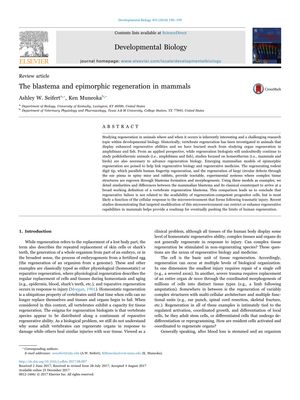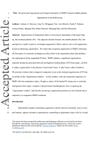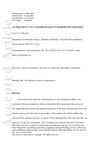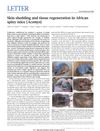The Blastema and Epimorphic Regeneration in Mammals
December 2017
in “
Developmental Biology
”

TLDR Mammals might fail to regenerate not because they lack the right cells, but because of how cells respond to their surroundings, and changing this environment could enhance regeneration.
The 2018 review article examines the process of epimorphic regeneration in mammals, with a focus on the blastema, a cell mass that forms after injury and is essential for regeneration. The paper discusses the varying regenerative abilities across vertebrates, from complex organ regeneration to simple scar tissue healing, and emphasizes the microenvironment's role in influencing regenerative success. It explores mammalian models like rodent digit tip and ear pinna regeneration to understand potential mechanisms applicable to human regeneration. The review suggests that regenerative failure in mammals may not be due to a lack of competent progenitor cells but rather the cellular response to the microenvironment, proposing that modifying this environment could improve regenerative outcomes. The importance of the extracellular matrix, signaling factors, and the immune system in regeneration is highlighted, with the ear hole model in certain species like spiny mice serving as a basis for studying interspecies variation in regenerative ability and identifying key factors for blastema formation and morphogenesis.



